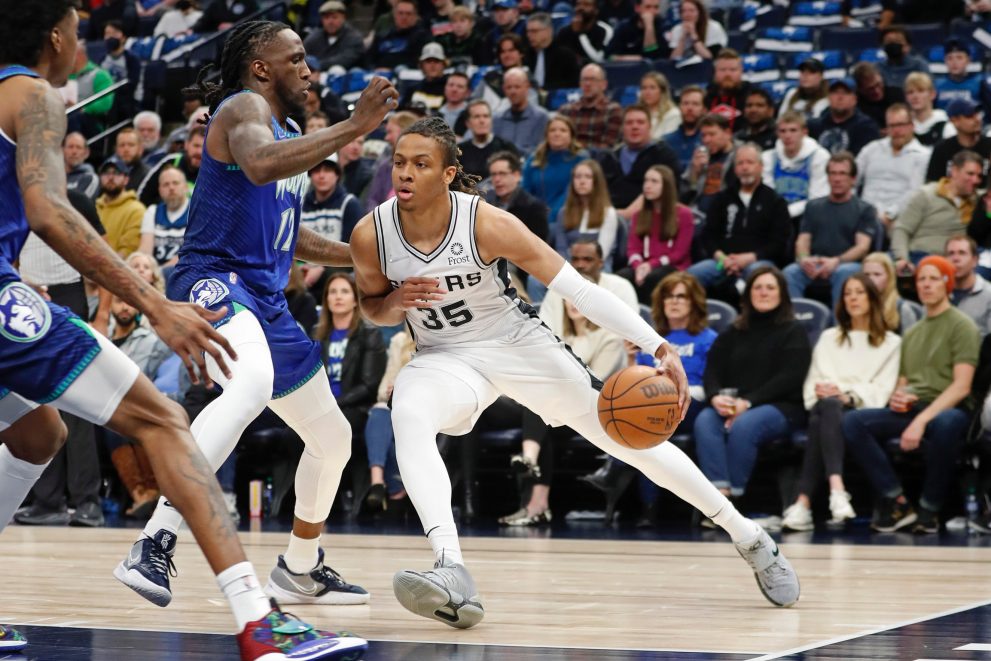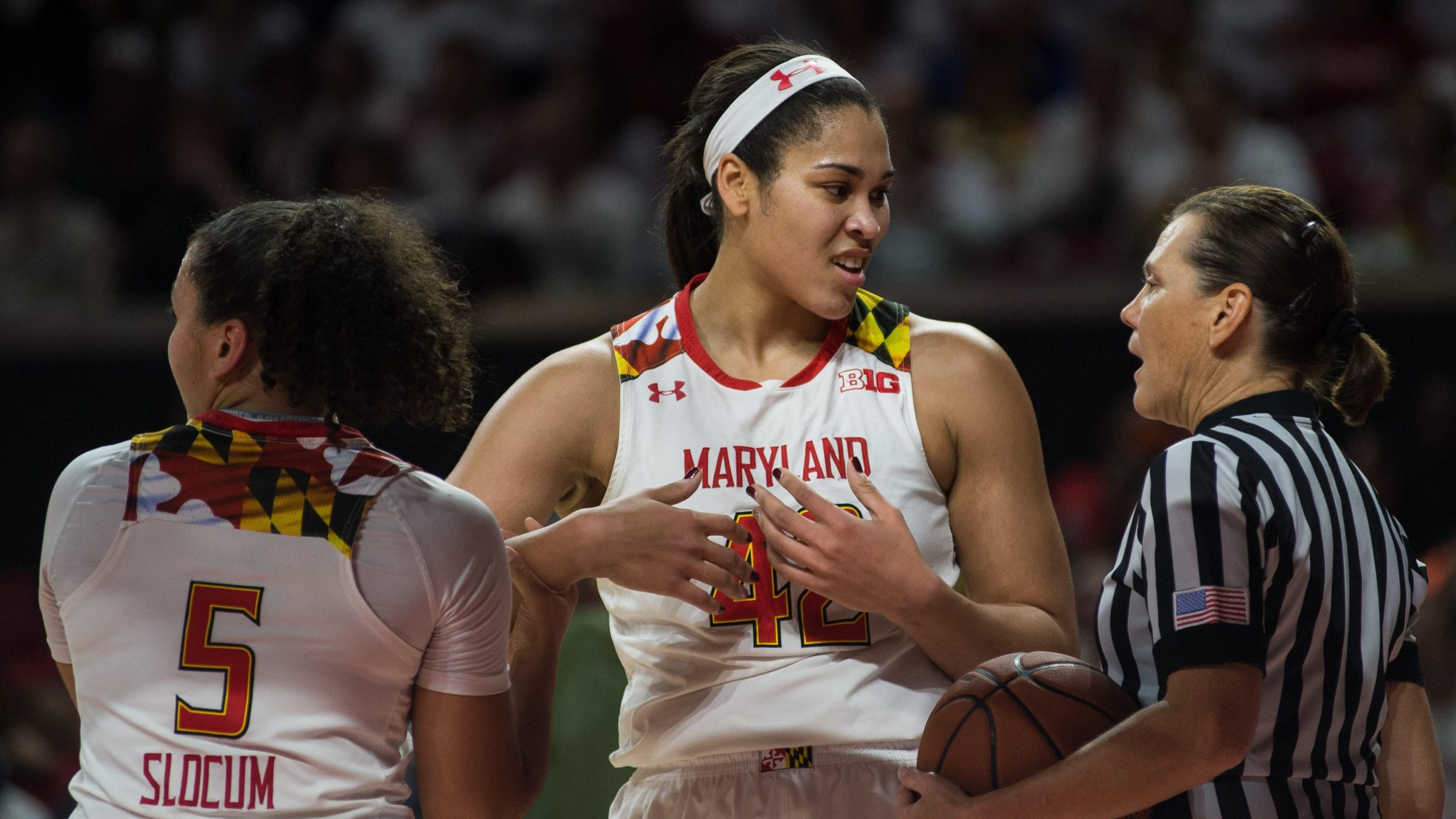The San Antonio Spurs have kicked off training camp, and the front office has several roster decisions in preparation for the first year of their rebuild. While organizations can carry up to 20 players during the offseason, they must crop that number to 15 standard contracts and a pair of two-way deals by the beginning of the regular season.
Here’s a look at where the Silver and Black stand as of Monday morning.
Here is the official training camp roster for your San Antonio Spurs: pic.twitter.com/5dxW9mrIqq
— Noah Magaro-George (@N_Magaro) September 23, 2022
Exhibit 10 contracts essentially function as training camp tryouts, which is why Jalen Adaway, Alize Johnson, and Tommy Kuhse will presumably find themselves rerouted to the Austin Spurs after receiving the boot. But that means General Manager Brian Wright still has one more cut on the docket and two logical candidates in Romeo Langford and Keita Bates-Diop.
Bates-Diop will get an article dedicated to his case for remaining in the 2-1-0 in the near future, but for now, let’s hone in on Langford.
The Boston Celtics shipped Langford, Josh Richardson, and multiple picks to San Antonio for Derrick White at the trade deadline last season. While a change of scenery can revitalize a career, the 2019 lottery selection rarely saw the floor for Gregg Popovich, logging a forgettable 43 minutes in four games during the last two months of the regular season.
A nagging groin injury kept the 22-year-old swingman on the sidelines for most of his first go-round with the Spurs, an unfortunate continuation of a cycle of physical ailments that plagued him in Boston. Langford missed an astounding 106 games in almost three seasons with the Celtics, with most absences stemming from neck, calf, ankle, wrist, knee, and heel issues.
His inability to stay on the court is unquestionably concerning to a certain degree, though it also suggests we probably haven’t seen Langford at his best. Missing that much in-game experience can derail development. The Indiana product deserves the benefit of the doubt until the coaching staff gives him consistent minutes within a defined role.
But what does he offer on the hardwood? Which role best fits his skillset? And how can he earn run on a team with a jam-packed backcourt?
Langford is guaranteed to begin the season behind Devin Vassell, Keldon Johnson, and Josh Richardson on the depth chart. He might even have to battle with Josh Primo, Joe Wieskamp, Malaki Branham, and Blake Wesley for the scraps at the end of the rotation. Regardless, Langford has one leg up on the competition as a tried and true defender.
Standing six-five and 216 pounds with a six-eleven wingspan, exceptional strength, active hands, and a penchant for physicality, Romeo owns about every trait you desire from a perimeter defender. He has held his man-to-man assignments to 37.8% shooting on 447 shot attempts, a career DFG% on par with All-Defense honorees Draymond Green and Matisse Thybulle.
Romeo Langford gets a bit lost in the mix when we talk about the Spurs but he could offer them real defensive value and untapped upside.
He has held his man-to-man assignments to 169-of-447 (37.8%) shooting since entering the league and flashed a little PNR ball-handling.
— Noah Magaro-George (@N_Magaro) July 1, 2022
Langford isn’t perfect, quicker guards can beat him off the dribble, but he possesses unique positional versatility (95th percentile according to BBall Index). He can wall off drives to the basket, contest shots with his length, and pester bigger ball-handlers, getting under them for steals that lead to fastbreak opportunities.
He can hold his ground in the paint against either forward position, covers wings one-on-one, and is serviceable versus most point guards. Although he ranked moderately low in matchup difficulty (36th percentile according to BBall Index), Langford is immensely valuable for small-ball lineups as a player who can be stationed all around the court.
It's not going to get enough love, because so many other fun things happened in the Celtics win, but this is outstanding defense from Romeo Langford. All game long he battled against players who had at least 6-8 inches on him. And Langford regularly won those battles like this. pic.twitter.com/S8I8EGAqxj
— Keith Smith (@KeithSmithNBA) December 23, 2021
Despite looking turned around and overwhelmed as a team defender as a rookie, Langford developed into a functional cog for a switch-heavy Celtic system predicated on communication. He identifies and navigates on and off-ball screens well, makes timely weakside rotations, and works to stay glued to his man (94th percentile in Defensive Miles per 75 possessions).
There is still plenty of room for improvement in the activity and awareness departments. Langford still gets caught ball-watching from time to time, a flaw that leaves him lost, flatfooted, and liable to backdoor cuts and quick rips. And he has a habit of failing to dig, stunt, and plug driving gaps when fixating too much on suffocating shooters in the corners.
Langford is effective when closing out, using his length to alter shots and forcing opponents into a measly 14-of-45 (31.1%) success rate on spot-up three-pointers a season ago. He gives extra effort to stop fastbreaks and pursue opponents for chase-down blocks. His well-rounded game on this end led to a +0.6 D-LEBRON (77th percentile per BBall Index).
Romeo Langford is elite on defense pic.twitter.com/OKrIi7vyfS
— Dante Turo (@DanteOnDeck) February 8, 2020
The former Hoosier should have no problem fitting anywhere defensively. However, that scheme versatility doesn’t translate to the other end.
Once upon a time, pundits pegged Langford as a possible high-level self-creator with complementary playmaking chops. That hasn’t been the case for Romeo, and the numbers paint a completely different picture. Not only did roughly 80.7% of his field goals come via assist, but he made the fewest passes in the league of the 335 players who logged at least 700 minutes in 2021-2022.
Langford also received the fewest passes in the league among that same cohort. So, he seldom had the chance to show what he could do with the ball in his hands. Perhaps there was a good reason. The young guard has yet to score on an isolation possession in the NBA, which isn’t astonishing given his modest handle and lack of wiggle, burst, and vertical pop.
Lining up alongside legitimate All-Stars and high-volume bucket getters in Jayson Tatum and Jaylen Brown didn’t help his case either.
There were periodic flashes from Langford as a pick-and-roll ball-handler, but his shoot-first mentality often led to enigmatic attempts and a handful of missed passing reads. His middling athleticism makes it tough to create advantages off the bounce, and he isn’t hyper-skilled in a way that makes up for his physical limitations.
Those deficiencies also materialized in transition, where Langford landed in the bottom 17th percentile in efficiency (per Synergy). Romeo was reliable as a play-finisher at the rim, but he only went 2-of-8 (25%) as the primary ball-handler, forcing the issue instead of seeking teammates. And he shot a dreadful 4-of-15 (26.7%) when spotting up from three on the break.
His percentages rose dramatically in the half-court as a stationary threat as Langford drained 32.9% of his 63 catch-and-shoot looks. While that clip is still below league average (36.4%), the table below should inspire at least some confidence in his progression. He might never turn into a movement shooter, but there has been tangible improvement each season.

Romeo is becoming satisfactory from beyond the arc, but cleaning up his shot prep could help his consistency and make defenders pay for leaving him alone on the perimeter (90th percentile in openness per BBall Index). He frequently stands upright with his hands by his side, a less-than-ideal position to receive the ball since setting up before the catch is critical.
Putting in the work to generate open shots is another part of the equation for off-ball specialists, an area Langford needs to grow. He frequently has entire possessions in the corner, where he makes minimal efforts to set or use screens or relocate with intention. Romeo is more of an opportunistic cutter, which explains why he only did so 22 times last season and placed in the 37th percentile in efficiency (per Synergy).
Finishing around the basket was one of his greatest assets in college. And while it still shines when attacking aggressive closeouts, Langford doesn’t separate off the dribble particularly well at this level. He shot 59.6% inside the restricted area last year (5.7% below league average), settling for low-percentage layups or contested floaters against mostly set defenses.
Altering his game to take advantage of the minimal touches that come his way could make a considerable difference for Romeo Langford. The soon-to-be fourth-year professional is a defensive commodity. If he spaces the floor while keeping defenders occupied by his off-ball activity, there is no reason he can’t carve out a bench role with the San Antonio Spurs.
*All statistics are courtesy of the NBA, Synergy, or BBall Index.







